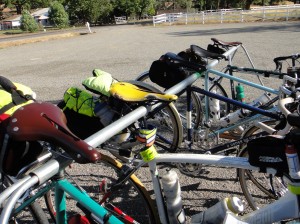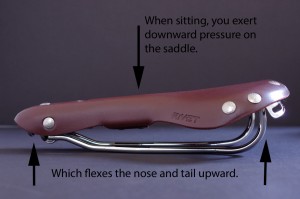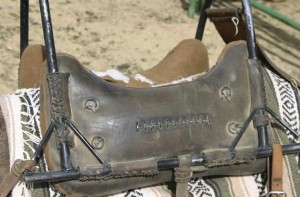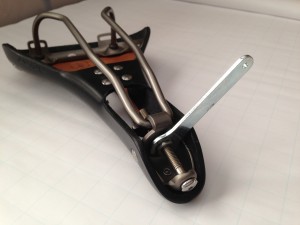Since I’ve gotten into this business I look at people’s bottoms quite a bit while seated on their saddle. Some might say I’m voyeuristic in this regard, but I prefer to say I’m doing research. I notice their posture, where they sit on their saddle, or do their hips sway left and right. I even notice where the wear is on their bike shorts (inner thigh or perhaps the thinning of material across the rear, leaving too much to be seen, especially in a pace line, if ya follow). And so too, when they dismount I take in the condition of their saddle, especially leather ones.
More often than not, when people choose a leather saddle, they take the time to dial it in, and once there, leave it alone. As I have been fond of saying, Rivet saddles are “firm but forgiving”, which means they will take more time to break-in than some leather manufacturers, but once they are broken-in, they’ll stay the course for you over the long haul.
Visualize the basic geometry of a leather saddle. Leather is suspended between two main points; the frame and nose. When you sit on the saddle, your body weight puts downward force on the leather, both causing it to stretch and for the end points (rear and nose) to flex upward. If your saddle has titanium rails and frame, your downward force is partially adsorbed by the frame material. Titanium is both strong and lightweight, yet flexible, so more force is absorbed by the frame and rail material.
Cromoly frames are stiffer, and do not have the same absorbing prowess that titanium does, hence the leather, which is pliable ends up taking more the force. In both frame materials, the leather will stretch, and should be re-tensioned. But how much re-tensioning is the right amount?
Comfort is an individual thing. I like my saddle to be firm, so I test its tension regularly, making adjustments as needed. I don’t like my saddle super taut (as in not being able to turn the bolt without exerting quite a bit of leverage) but taut enough so that I feel the tension in the bolt, and when pushing down on the saddle, it jumps back up to me.
I know of riders who like a lot of sway in their saddle. Whenever I see these saddles I am reminded of a camel saddle, with a big dip in the seat and the front and rear of the saddle are high, just like the saddle on a mountain pass. This is fine if that’s your comfort spot, just be aware that you are putting more downward pressure on the frame and nose, which can lead to over-stretching.
Your Rivet is either equipped with a bolt that fits a 4mm hex, or a torx screw head (found on the earlier titanium saddles) and a bolt that fits into the nose piece. Using the #4, turn the bolt one or two revolutions to re-tension the saddle. If you have a titanium saddle, use the spanner wrench to accomplish the same thing (the torx screw is worthless and won’t be spec’d on future Rivet saddles).
It’s not unusual for riders to stop me and ask me to look at their saddle. They tell me that it felt great at first and now they are getting hot spots, or pressure points in their crotch area. The first thing I do is take a mini-tool and re-tension the saddle, and voila! The majority of issues disappear.
Finally, a few people have let me know that the bolt can unscrew letting out the tension in the saddle once it’s had a bunch of miles on it. The fix was an easy one – unscrew the bolt, letting all the tension out of your saddle. Apply a small amount of Gorilla glue to the bolt. Re-tension it by screwing the bolt back in. It will keep the bolt from flexing loose, but still allow you to tighten it if needed.
Keeping an eye on your Rivet is as important as keeping your drive train clean. If your Rivet is happy, so will be your bum, and that is a good thing. A very good thing.




